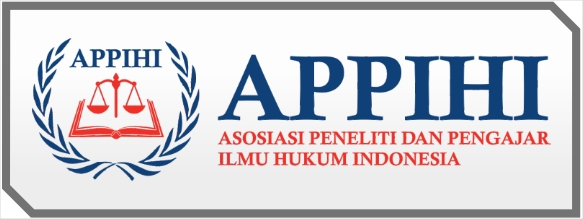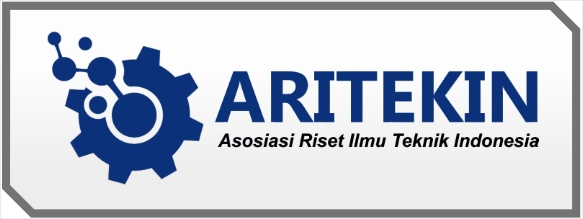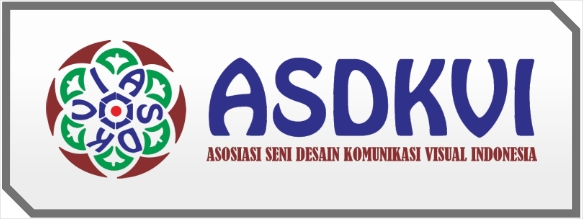Penaggulangan Masyarakat Korban Bencana Banjir Longsor Menerjang Kampung Cigintung Desa Cibenda Kecamatan Cipongkor Kab. Bandung Barat
DOI:
https://doi.org/10.58192/karunia.v3i1.2037Keywords:
Mitigation, Victim Communities, Disasters, LandslidesAbstract
The aim of this research is to determine the response to landslide floods that occurred in West Bandung Regency, and the evacuation of victims who were injured and died due to landslide floods. As well as restoration of damage to facilities and infrastructure such as community houses, school buildings, mosques and schools due to landslides. The research method uses qualitative methods that describe events at the research location related to landslide victims. The data collection technique is through interviews with several officials and volunteers as well as RW and RW administrators. Observations are carried out to see and observe the conditions at the scene, such as residents' houses that were hit by landslides. Documentation studies related to the research focus in the form of mass media and other online media. The conclusion is that the impact on dealing with landslide flood victims has been implemented by the local government, officials and volunteers. Evacuation of victims with serious and minor injuries as well as those who died have been evacuated to the Cililin Regional General Hospital. Restoration of damaged residents' houses as well as prayer rooms and mosques as a means of worship for Muslims has been carried out. With the natural disaster that resulted in many victims, it became an evaluation material for the West Bandung Regency government, so that it could educate the public.
References
Adiwijaya, C. (2017). Pengaruh pengetahuan kebencanaan dan sikap masyarakat terhadap kesiapsiagaan menghadapi bencana tanah longsor (Studi di Kelurahan Lawanggintung, Kecamatan Bogor Selatan, Kota Bogor). Jurnal Prodi Manajemen Bencana, 3(2), 81–101. Retrieved from
Afiyanti, F., & Rachmawati. (2014). Metode Penelitian Kualitatif Dalam Riset Keperawatan. Jakarta: PT. Raja Grafindo Persada.
Afiyanti, Y., & Rachmawati, I. N. (2014). Qualitative research methodology in nursing research. Jakarta: Rajawali Press. Aminuddin. (2013). Natural disaster mitigation and preparedness. Bandung: Angkasa Bandung.
Amri, A., Bird, D. K., Ronan, K., Haynes, K., & Towers, B. (2017). Disaster risk reduction education in Indonesia: Challenges and recommendations for scaling up. Natural Hazards and Earth System Sciences, 17(4), 595–612.
Arif, M. (2018). Urban community preparedness for earthquake disasters. Unpas Journal of Planning, 8(1), 903–916. Disasterpedia.ID. (2017). Vulnerable groups. Retrieved June 3, 2022, from disasterpedia.ID.
BNPB. (2014). Towards a resilient Indonesia facing tsunamis. Tsunami Disaster Risk Reduction Masterplan.
BNPB. (2017). National disaster preparedness training manual: Building awareness, vigilance and preparedness in facing disasters. BNPB. BNPB. (2018). Disaster preparedness guide for families. Retrieved June 27, 2022,
BNPB. (2019). Pocket book for resilient response to disasters. Jakarta: BNPB Information and Public Relations Data Center.
BNPB. (2021). Indonesian disaster risk index (IRBI) 2020. National Disaster Management Agency,.
BNPB. (2022). BNPB verified 5,402 disaster events throughout 2021. Disaster Events Throughout 2021, - Thursday%2C 17 February&text=The number of events was dominated by between, and 1 volcanic eruption.
BPBD. (2019). The threat of Sumatran earthquakes is not only the megathrust.
Padang City BPS. (2020). Koto Tangah District in 2020 figures.
Chyntia. (2016). How can parents help children cope after a disaster. Journal of Pediatric Health Care, 32(2), 07–10.
Damayanti, H. . (2015). Kajian kesiapsiagaan individu dan rumah tangga dalam menghadapi bencana tsunami di Kecamatan Grabag Kabupaten Purworejo. Skripsi Universitas Negeri Semarang.
Deputi Bidang Perlindungan Anak Republik Indonesia. (2017). Pedoman standar layanan kesiapan keluarga hadapi bencana. Jakarta: DBPA.
Dewanto, S. (2020). ANTARA kantor berita Indonesia. In Ahmad Buchori (Ed.), 31 persen korban bencana 2020 adalah anak-anak. Tangerang.
Dodon. (2016). Indikator dan perilaku kesiapsiagaan masyarakat di permukiman padat penduduk dalam antisipasi berbagai fase bencana banjir. Jurnal Perencanaan Perencanaan Wilayah Dan Kota, 24(2), 125–140.
Dwi Jokowinarno. (2017). Mitigasi bencana tsunami di wilayah pesisir lampung. Jurnal Rekayasa, 15(1), 13–20.
Erlida, D., & Kumalawati, R. (2017). Analisa kesiapsiagaan masyarakat dan pemerintah menghadapi bencana banjir di Kecamatan Martapura Barat Kabupaten Banjar. Jurnal Pendidikan Geografi.
Fatimah. (2014). Buku ajar keperawatan keluarga. Jakarta: TIM.
Febriana. (2016). Kesiapsiagaan masyarakat desa siaga bencana dalam menghadapi bencana gempa bumi di Kecamatan Meuraxa Kota Banda Aceh. Jurnal Ilmu Kebencanaan, 2, 41–49.
Hasanah, E. (2021). Metodologi penelitian pendidikan. Yogyakarta: UAD Press.
Mardawani. (2020). Praktis Penelitian Kualitatif Teori Dasar Dan Analisis Data Dalam Perspektif Kualitatif. Yogyakarta: Deepublish.
Maryanti, S., Lestari, E., Putri, W., Wardani, A. ., & Haris, F. (2017). Hubungan tingkat pendidikan masyarakat terhadap kesiapsiagaan bencana tanah longsor di Kelurahan Giritirto Kecamatan Wonogiri. Universitas Muhammadiyah Surakarta: Prosiding Seminar Nasional Geografi UMS VIII.
Muzenda-Mudavanhu, C. (2016). A review of children’s participation in disaster risk reduction. Journal of Disaster Risk Studies 8 (1), Art, 6.
Nefilinda, Rianto, S., & Jamsari. (2019). Disaster mitigation service in Pasie Nan Tigo sub-district Koto Tangah Kota Padang. 1(2), 78–69.
Novita, D. (2015). Faktor-faktor yang mempengaruhi kesiapsiagaan bencana banjir di Gampong Garot Kecamatan Darul Imarah Aceh Besar. Universitas Syiah Kuala Aceh.
Onuma H, Shin K.J, & Managi S. (2017). Household preparedness for natural disasters: Impact of disaster experience and implications for future disaster risks in Japan. International Journal of Disaster Risk Reduction, 21, 148– 158.
Palmeiro, S., & Orellana, P. (2018). Effects of earthquake on perinatal outcomes. A Chilean Register-Based Study, (PLOS ONE), 1–11.
Paramesti, C. A. (2011). Kesiapsiagaan masyarakat kawasan Teuk Pelabuhan Ratu terhadap bencana gempa bumi dan tsunami. Journal of Regional and City Planning, 22(2), 113–128.
Phillips, B., Neal, D., & Webb, G. (2016). Introduction to emergency management 2nd edition. USA: CRC Press : Taylor & Francis Group.
Puspito, N. E. . (2010). Mengelola resiko bencana di daerah maritim. Bandung: Institut Teknologi Bandung.
Putri Ariani, A. (2017). Ilmu gizi dilengkapi dengan standar penilaian status gizi dan daftar komposisi bahan makanan. Yogyakarta: Nuha Medika.
Ramya, V., & Palaniappan, B. (2011). An automated tsunami alert system. International Journal of Embedded System Applications (Ijesa), 1(2), 177– 185.
Rizqillah, A.F & Suna, J. (2018). Indonesia emergency nurses preparedness to respond to disaster. A descriptive survey: Elsevier.
Rukajat, A. (2021). Metodologi penelitian (kuantitatif dan kualitatif). Yogyakarta: Deepublish.
Sadiman, & Tristia Ningsih. (2019). Explore Ilmu Pengetahuan Alam (T. Cahyani, B. Sapta, & N. Qomariah, Eds.). Bandung: Ambassador publisher.
Safinah, S. (2014). The relationship between experiences of tsunami incidents and disaster preparedness in the community in Gampong Jeulingke, Syiah Kuala District, Banda Aceh City. Syiah Kuala University.
Sari, D. P., & Satria, B. (2018). Earthquake and tsunami disaster preparedness in families with children with disabilities. JIM FKEP, 3.
Sigit, A. (2018). Smart book about disasters. CV BUDI UTAMA.
Singgih U.P. (2017). Disaster management and togetherness: a community participation perspective, in a book reviewing the concept of Indonesian disaster management. Jakarta: Research Center for the DPR RI Expertise Agency and Intelgensia Intrans Publishing.
Siregar, J. S., & Wibowo, A. (2019). Efforts to reduce disaster risk among vulnerable groups. 10(1). Siregar, N. (2018). Pedriatric population in disaster: how should we care for them? 2(2), 83–89. Sodiaotomo. (2010). Toddler Characteristics. Yogyakarta: Nuha Medika.
Speziale, H. S., Streubert, H. J., & Carpenter, D. R. (2011). Qualitative Research in Nursing: Advancing the Humanistic Imperative.
Sugiyono. (2017). Educational Research Methods Quantitative, Qualitative and R&D Approaches. Bandung: Alphabeta.
Sugiyono. (2019). Quantitative, qualitative and R&D-MPKK research methods (2nd ed.). Bandung: CV. Alphabet.
Suparji, Nugroho, H. S. W., Surtinah, N., & Sunarto. (2021). Monograph 5 parameters of disaster preparedness.
Teja, M. (2018). Community preparedness for vulnerable groups in facing natural disasters in Lombok. DPR RI Expertise Agency Research Center, X(17).
Wiko Setyonegoro. (2011). Tsunami numerical simulation applied to tsunami early warning system along Sumatra region. Journal of Meteorology and Geophysics, 12(1), 21–32.
Winoto, & Zahroh, C. (2020). The influence of socializing disaster preparedness through simulation methods on increasing skills in dealing with disasters among disaster preparedness students (MAGANA). Nahdlatul Ulama University, 13(02 (2020) E-ISSN: 2477-3948).

















